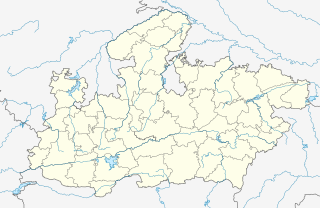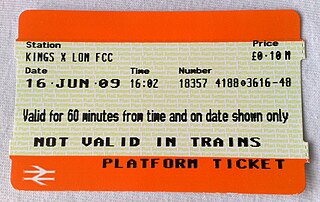 W
WA train station, railway station, railroad station or depot is a railway facility or area where trains regularly stop to load or unload passengers or freight or both. It generally consists of at least one track-side platform and a station building (depot) providing such ancillary services as ticket sales, waiting rooms and baggage/freight service. If a station is on a single-track line, it often has a passing loop to facilitate traffic movements.
 W
WA railway platform is an area alongside a railway track providing convenient access to trains. Almost all stations have some form of platform, with larger stations having multiple platforms.
 W
WCentral stations or central railway stations emerged in the second half of the nineteenth century as railway stations that had initially been built on the edge of city centres were enveloped by urban expansion and became an integral part of the city centres themselves. As a result, "Central Station" is often, but not always, part of the proper name for a railway station that is the central or primary railway hub for a city.
 W
WA station clock is a clock at a railway station that provides a standard indication of time to both passengers and railway staff.
 W
WThe deep column station is a type of subway station, consisting of a central hall with two side halls, connected by ring-like passages between a row of columns. Depending on the type of station, the rings transmit load to the columns either by "wedged arches" or through purlins, forming a "column-purlin complex".
 W
WA freight house is a building owned and operated by a railroad for receiving, loading, unloading, and temporary storage of less-than-car load (LCL) freight. Having a protected area for temporary freight storage improves efficiency by allowing railroads to accommodate customers' delivery and pickup schedules without leaving boxcars idle at loading points and destinations. A typical freight house has at least one trackside door with one or more doors for trucks or wagons to load and unload on the opposite side of the building.
 W
WA goods station or freight station is, in the widest sense, a railway station where, either exclusively or predominantly, goods, such as merchandise, parcels, and manufactured items, are loaded onto or unloaded off of ships or road vehicles and/or where goods wagons are transferred to local sidings.
 W
WLa gare inondée is an oil on canvas painting by the Portuguese-French artist Maria Helena Vieira da Silva that she executed in 1956. It was to be auctioned at Christie's, London, on 13 February 2014, when it was expected to fetch between £350,000 and £450,000, but was withdrawn.
 W
WA goods station or freight station is, in the widest sense, a railway station where, either exclusively or predominantly, goods, such as merchandise, parcels, and manufactured items, are loaded onto or unloaded off of ships or road vehicles and/or where goods wagons are transferred to local sidings.
 W
WA head house or headhouse may be an enclosed building attached to an open-sided shed, or the aboveground part of a subway station.
 W
WAn interchange station or a transfer station is a train station for more than one railway route in a public transport system that allows passengers to change from one route to another, often without having to leave a station or pay an additional fare.
 W
WIslampur railway station is located in Islampur, Nalanda district, Bihar state, India. It is come under East Central Railway zone of Danapur division.
 W
WJunnardeo railway station serves Junnardeo in the Indian state of Madhya Pradesh.
 W
WKeilbahnhof is the German word for a station located between branching tracks. There appears to be no direct English equivalent for this term, which appears in the route diagrams of German railway lines. In a keilbahnhof, the platforms curve in opposite directions so that they are parallel at one end of the station & not at the other.
 W
WMansi Junction railway station is a railway station in the Sonpur railway division of East Central Railway. Mansi Station is located in Khagaria district in the Indian state of Bihar. More than 80 trains pass through this station.
 W
WA metro station or subway station is a railway station for a rapid transit system, which as a whole is usually called a "metro" or "subway". A station provides a means for passengers to purchase tickets, board trains, and evacuate the system in the case of an emergency. In the United Kingdom, they are known as underground stations, most commonly used in reference to the London Underground.
 W
WA park and ride railway station is a railway station designed to be used for park and ride.
 W
WA platform ticket is a type of rail ticket issued by some railway systems, permitting the bearer to access the platforms of a railway station, but not to board and use any train services. It allows people to walk with their friends and loved ones all the way to the passenger car at stations where the general public is not admitted to platforms. Railfans can also purchase platform tickets and enjoy their trainspotting hobbies. They vary in type: some may only allow limited access and a sharply limited time of usage, while others may have totally free access to enter the platform area. During peak usage hours or rush hours, the platforms may only be available for passengers who intend to travel.
 W
WThe pylon station is a type of deep underground subway station. The basic distinguishing characteristic of the pylon station is the manner of division of the central hall from the station tunnels
 W
WIn public transport, a request stop, flag stop, or whistle stop is a stop or station at which buses or trains respectively stop only on request; that is, only if there are passengers or freight to be picked up or dropped off. In this way, stops with low passenger counts can be incorporated into a route without introducing unnecessary delay. Vehicles may also save fuel by continuing through a station when there is no need to stop.
 W
WA running in board is a large sign showing the name of the railway station on which it is found. The signs are intended to inform passengers of their location when on a train entering the station, possibly while still moving at speed.
 W
WThe shallow column station is a type of construction of subway stations, with the distinguishing feature being an abundance of supplementary supports for the underground cavity. Most designs employ metal columns or concrete and steel columns arranged in lines parallel to the long axis of the station.
 W
WThe single-vault deep underground station is a type of subway station.
 W
WA station box is a term in the construction industry: It describes a box-like underground structure for a transportation system, for example a metro or tube station.
 W
WA station building, also known as a head house, is the main building of a passenger railway station. It is typically used principally to provide services to passengers. A station building is a component of a station, which can include tracks, platforms, an overpass or underpass, and a train shed.
 W
WA station code is an abbreviation used on railways for railway stations. The codes are most used internally in the business, but can be seen at railway traffic signs and in some time tables.
 W
WStation Numbering is a sign system used by some railway companies in Japan, which assigns station codes consisting of a couple of letters and numbers to train stations. It aims to facilitate navigation for foreign travelers not familiar with the local language by using globally understood characters. The same system is also adopted by some railway companies in other countries/regions such as Mainland China, Taiwan, South Korea, Singapore, the United States, and Thailand.
 W
WA truncated railway station terminus an original railway station site that is sold for redevelopment and a new, usually smaller station is being constructed back down the line. There are many examples of station buildings and other structures, such as the redundant platforms at Whitby, being sold for redevelopment. The truncation however, was only partial, as one platform still survives in its original location. Many stations have had platforms truncated to accommodate larger concourses, such as London King's Cross and London Liverpool Street This article, however, is about new stations that have been fully truncated and cut short from a former location.